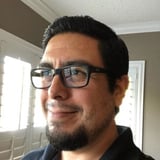Summary
In this talk, Jeff Gothelf discusses the widespread corporate pursuit of innovation in the face of disruption from nimble startups. Using examples like New Coke, Amazon Fire Phone, and Nordstrom's innovation lab, Jeff highlights how many large companies misunderstand innovation as a quick fix or a side project. He distinguishes between sustaining innovation, which improves existing products, and disruptive innovation, which creates entirely new business models leveraging core competencies. Jeff critiques popular corporate innovation efforts such as hackathons and innovation labs, explaining why they often fail due to lack of strategic alignment, incentives, ownership, and integration with core business units. Drawing on his experience at AOL and examples from Adobe’s Kickbox initiative, Jeff presents the innovation studio as a superior approach. This studio integrates leadership, long-term funding, cross-functional entrepreneurial teams, radical transparency, and genuine ownership—where teams take equity and carry winning ideas into new business lines or spinouts. He emphasizes patience of 18 months to three years and the need to publicly share both successes and failures to build a culture of experimentation. Jeff concludes that an innovation studio not only drives disruptive innovation outcomes but also improves sustaining innovation practices across the enterprise.
Key Insights
-
•
Many high-profile corporate innovation failures (e.g., New Coke, Amazon Fire Phone) stem from misunderstanding innovation as a superficial add-on rather than a strategic practice.
-
•
Disruptive innovation differs fundamentally from sustaining innovation; it focuses on creating new business models, not just shipping features.
-
•
Hackathons, while popular, are short-term events that rarely result in meaningful disruptive innovation due to lack of ongoing incentives and integration.
-
•
Innovation labs often fail because they operate in isolation from corporate strategy and struggle to hand off ideas to productization teams incentivized differently.
-
•
Nordstrom and eBay both shut down innovation labs to instead embed innovation as a corporate-wide value.
-
•
Adobe’s Kickbox program encourages experimentation across employees but falls short for disruptive innovation as it is part-time and lacks strategic focus.
-
•
An innovation studio led by an entrepreneurial manager and backed by strategic leadership and funding can overcome common innovation obstacles.
-
•
Disruptive innovation teams need to be small, cross-functional, and entrepreneurial, with ownership of their ideas, including equity participation.
-
•
Transparency and public exposure of both successes and failures within the innovation studio build a culture of learning and trust.
-
•
Long term commitment (18 months to 3 years) and organizational patience are critical for disruptive innovation to yield results.
Notable Quotes
"These are all attempts by large companies to figure out new ways to deliver their products or services or to create new businesses outside of what they’re currently working on."
"Innovation is not a spice that you sprinkle on and suddenly magical new things come out."
"Disruptive innovation is about changing customer behavior, not shipping features."
"Hackathons are a fun activity to spend some creative time together and then go back to making the stuff that we normally make."
"Innovation labs don’t work because their mission is to be innovative, not necessarily to solve real customer problems."
"Nordstrom decided that innovation needed to be a corporate value, not a lab value."
"Adobe’s Kickbox is a fantastic professional development tool, but it doesn’t drive new lines of business."
"The innovation studio bakes in strategic vision, leadership, funding, and ownership."
"The team that comes up with the winning idea leaves the studio with equity and carries the idea forward."
"Disruptive innovation doesn’t happen overnight; you have to practice, fail, learn, and have patience."
Or choose a question:
















More Videos

"Research operations is the spine of any successful research and insights group."
Nalini KotamrajuResearch After UX
March 25, 2024

"Availability bias means hiring managers often pick fruit from a tree they haven't planted."
Dean BroadleyNot Black Enough to be White
January 8, 2024

"We’re not going for perfection. We’re going for excellence and change."
Denise Jacobs Nancy Douyon Renee Reid Lisa WelchmanInteractive Keynote: Social Change by Design
January 8, 2024

"Our first problem statement was too big, so we refined it to something more doable and actionable."
Kim Fellman CohenMeasuring the Designer Experience
October 23, 2019

"Every major brand has a dark side brought to you by design on purpose, 40 hours a week."
George AyeThat Quiet Little Voice: When Design and Ethics Collide
November 16, 2022

"You need to be the connector between people trying to drive decisions and others influencing them."
Nathan CurtisBeyond the Toolkit: Spreading a System Across People & Products
June 9, 2016

"Compass is a pretty frank place where people feel safe to speak their minds, even at leadership levels."
Greg PetroffThe Compass Mission
March 10, 2021

"We have this collective superpower navigating the breadth and depth of human experience across cultures."
Chloe Amos-EdkinsA Cultural Approach: Research in the Context of Glocalisation
March 27, 2023

"We are not collecting vanity analytics, the data is doing real work on informing design."
Mackenzie Cockram Sara Branco Cunha Ian FranklinIntegrating Qualitative and Quantitative Research from Discovery to Live
December 16, 2022
















